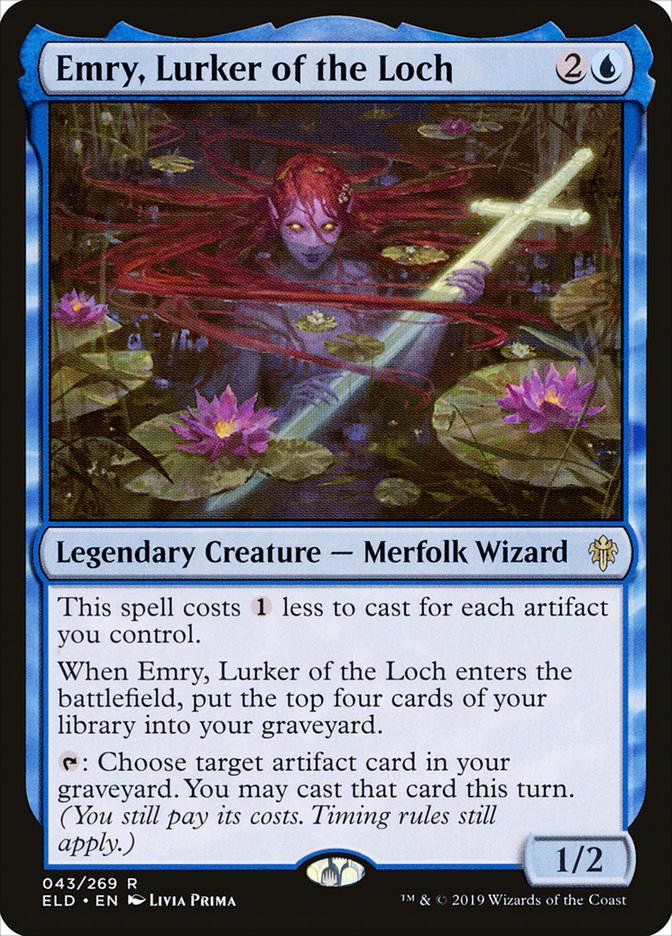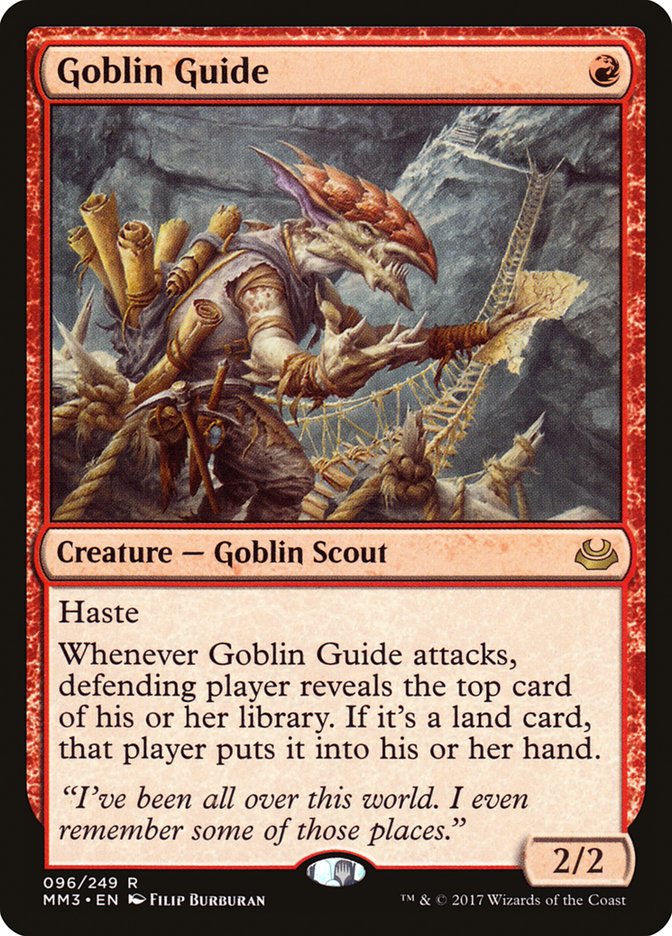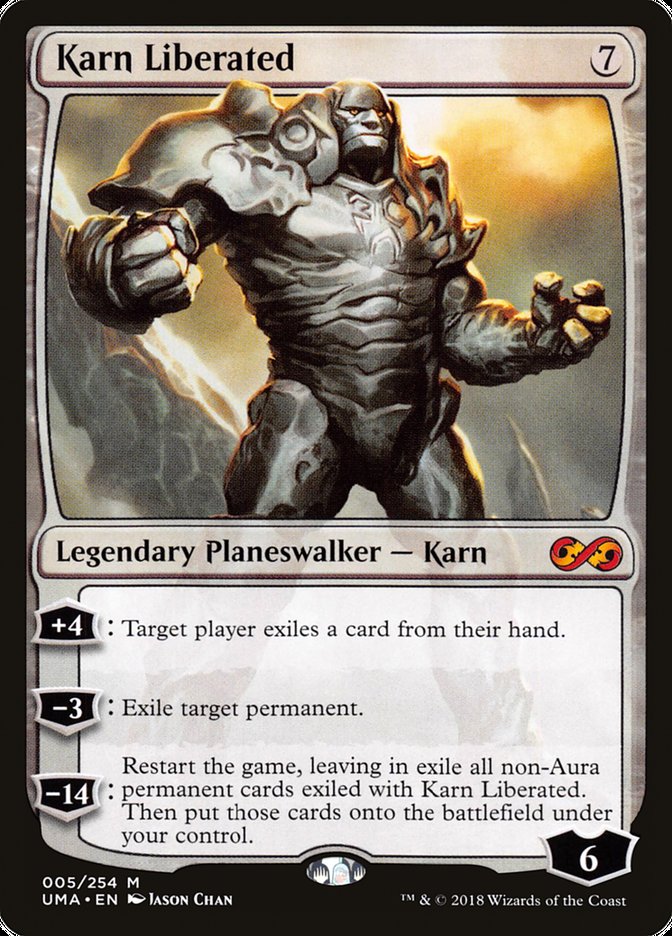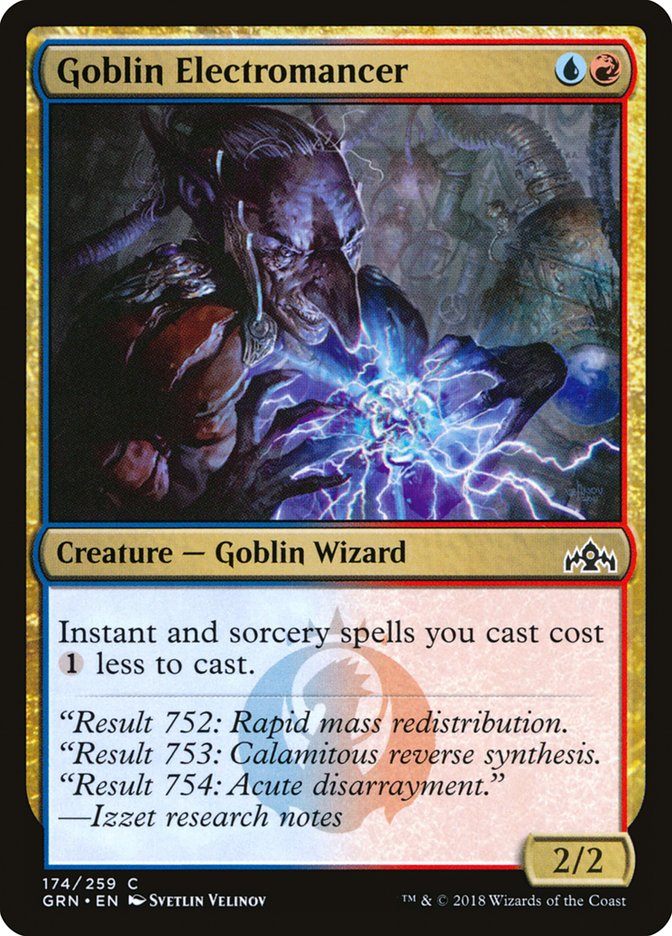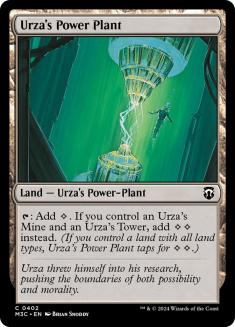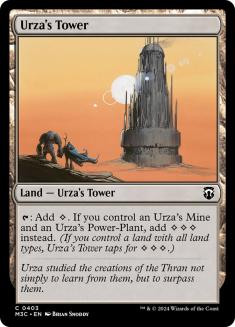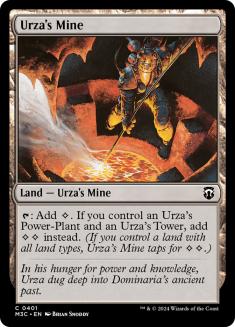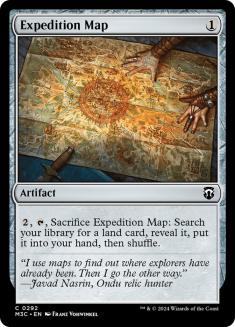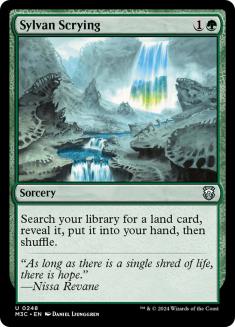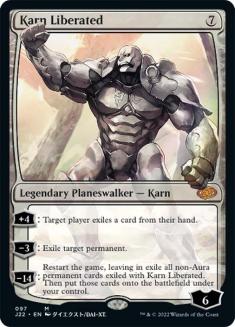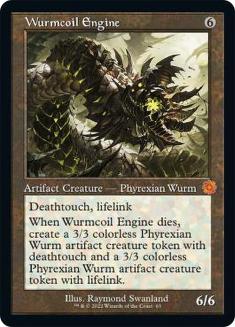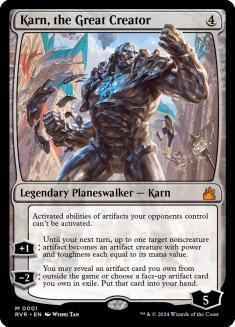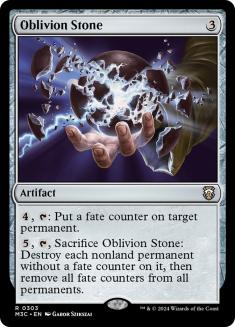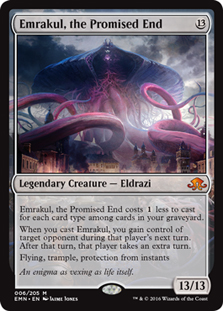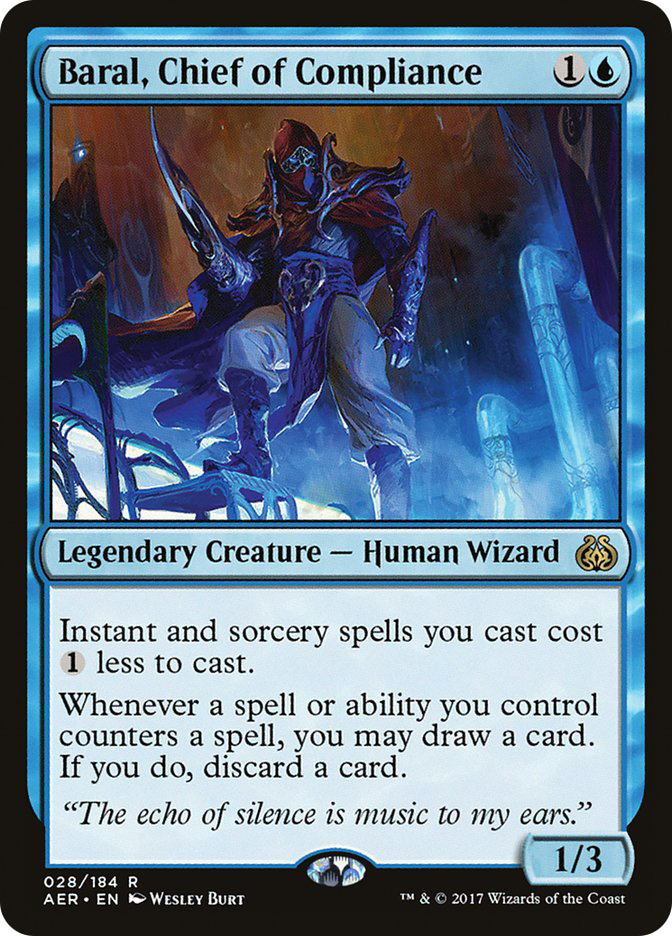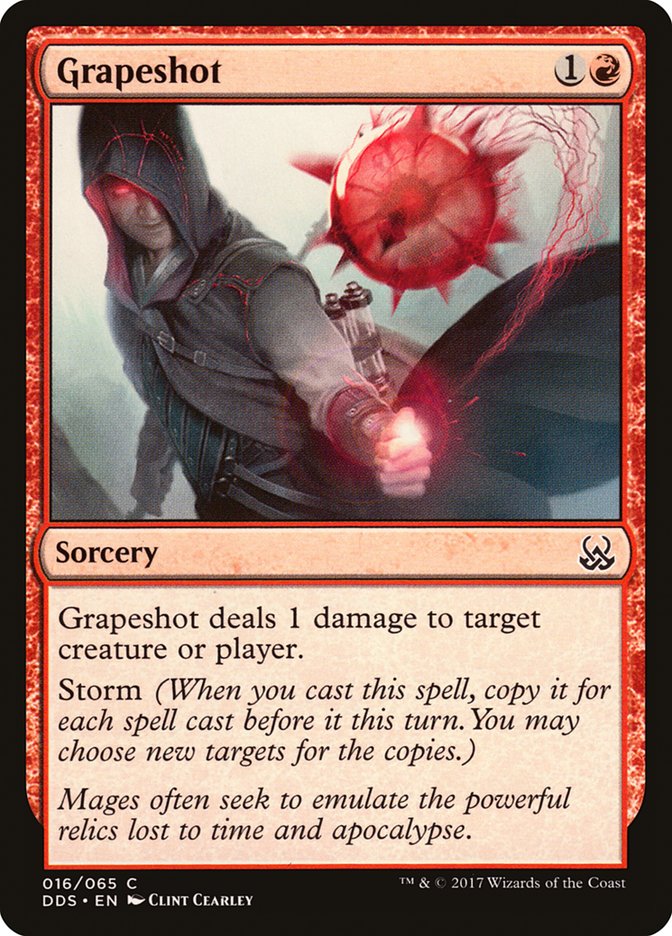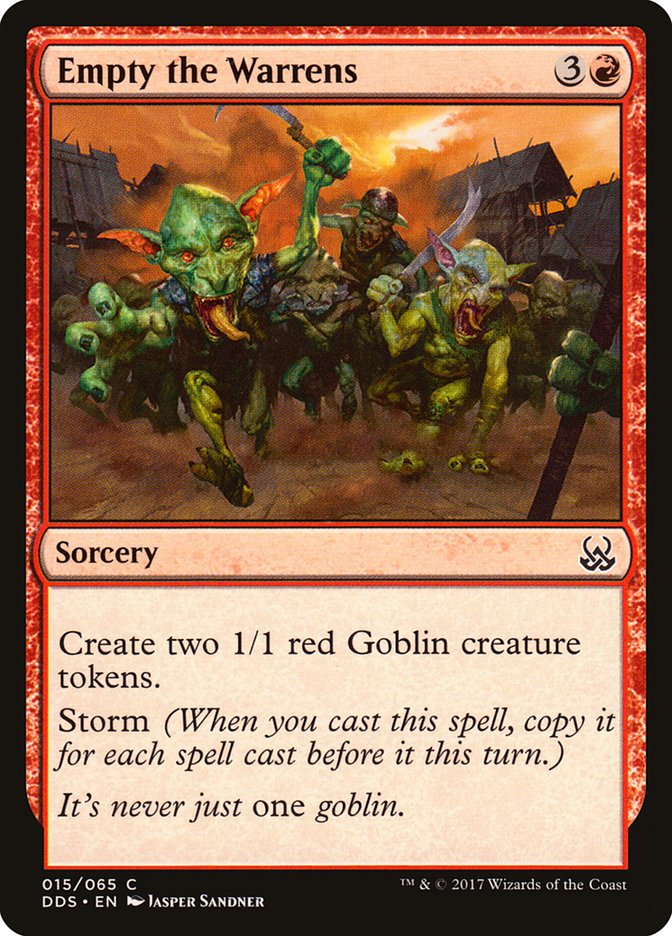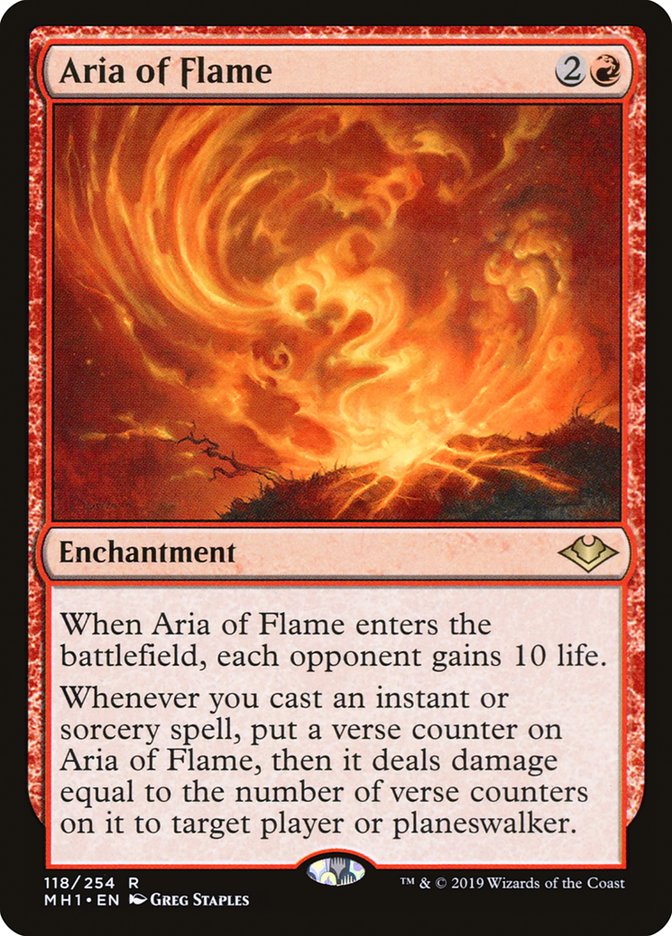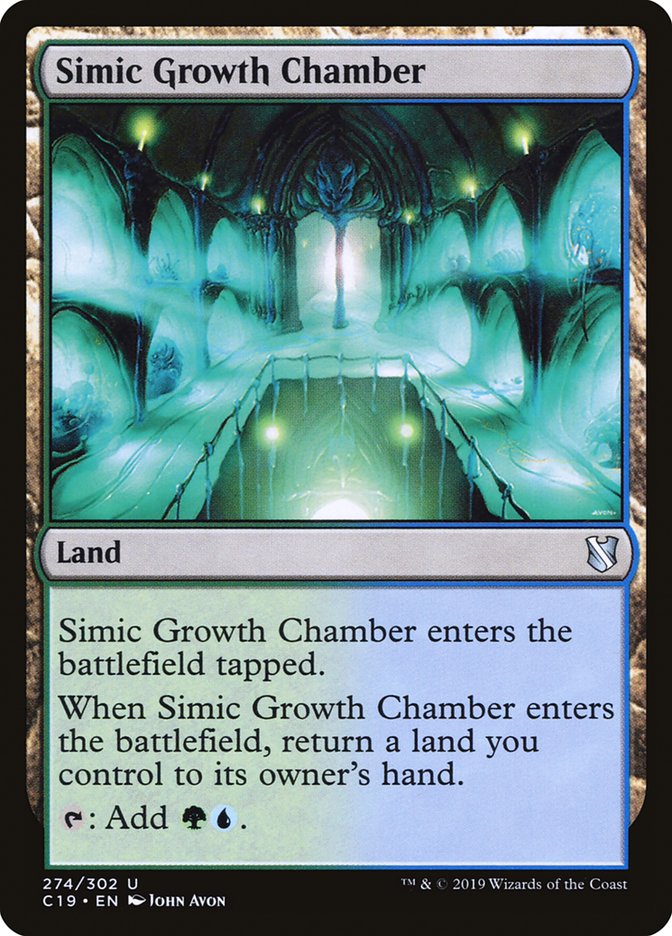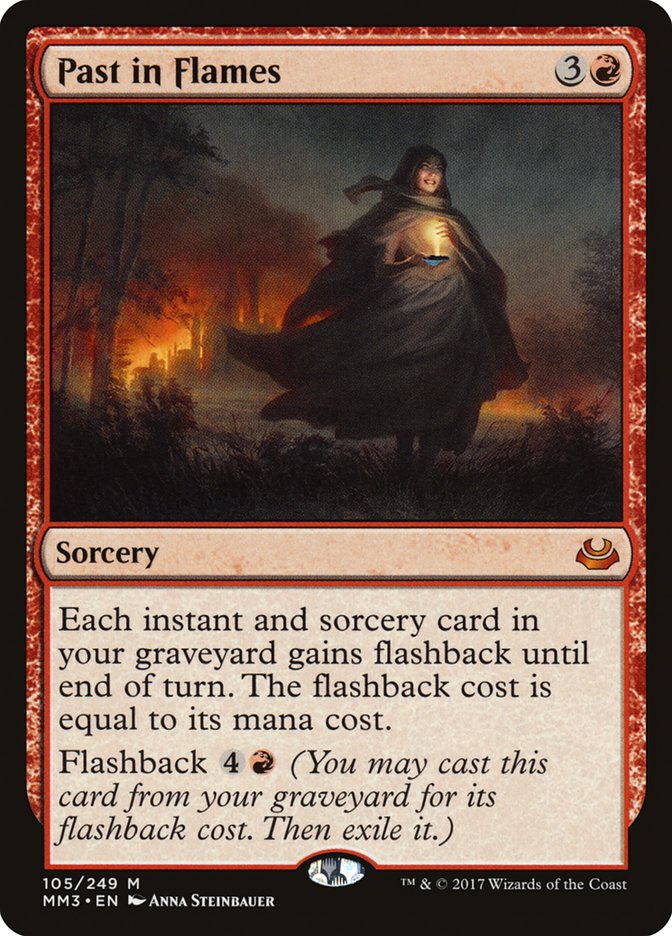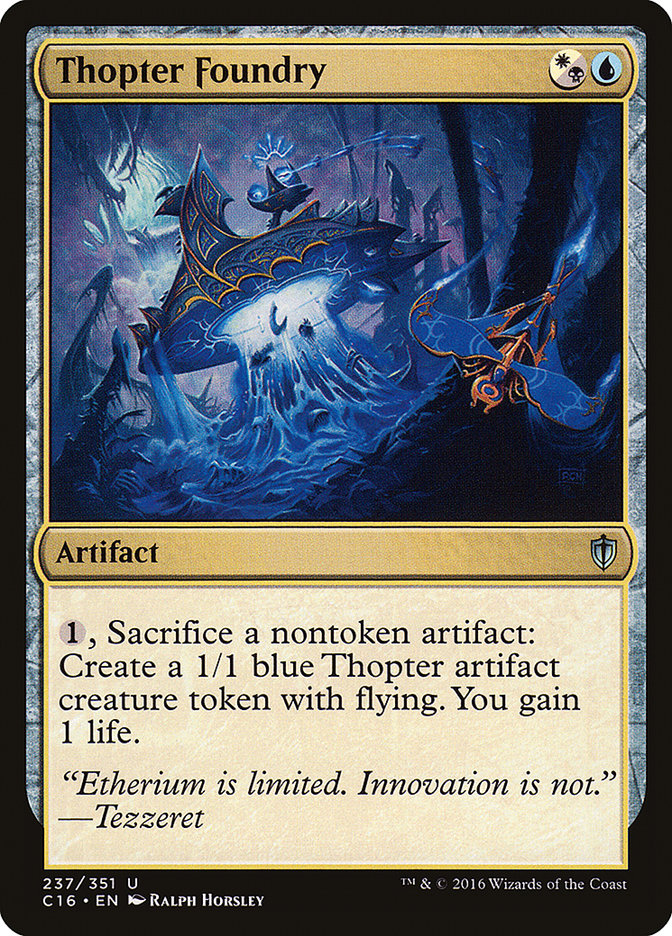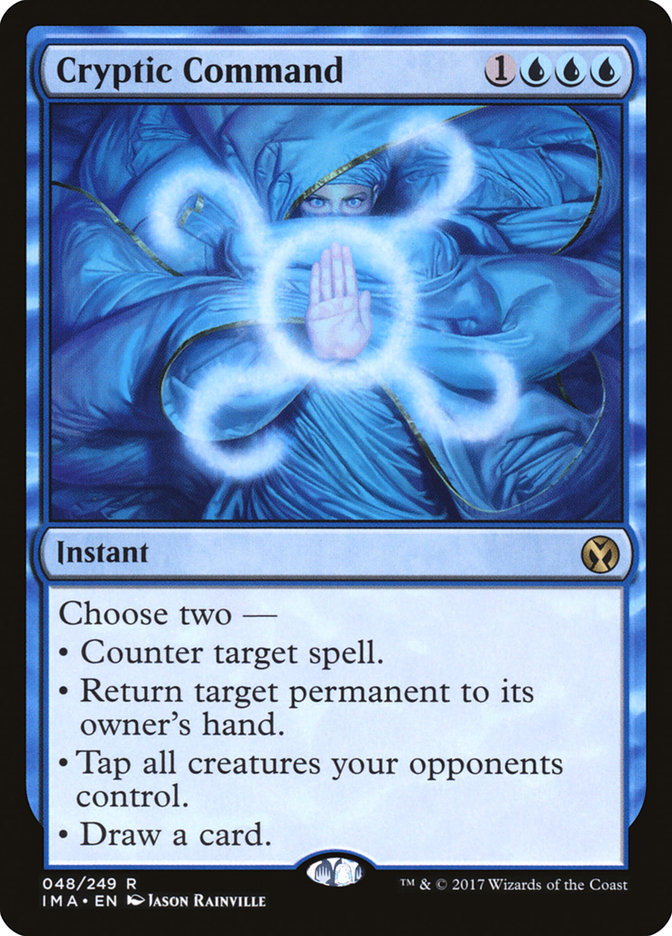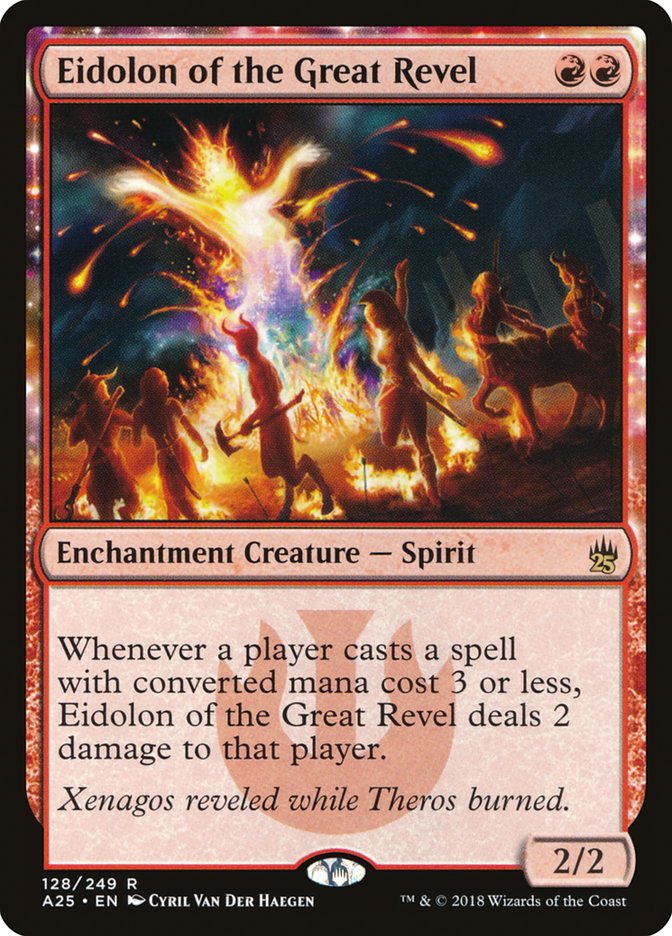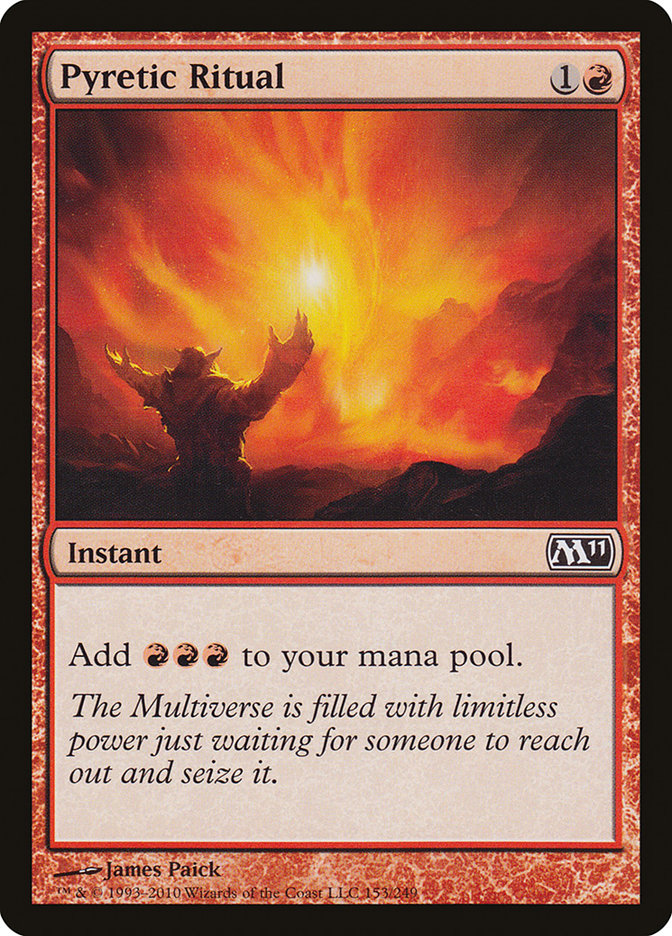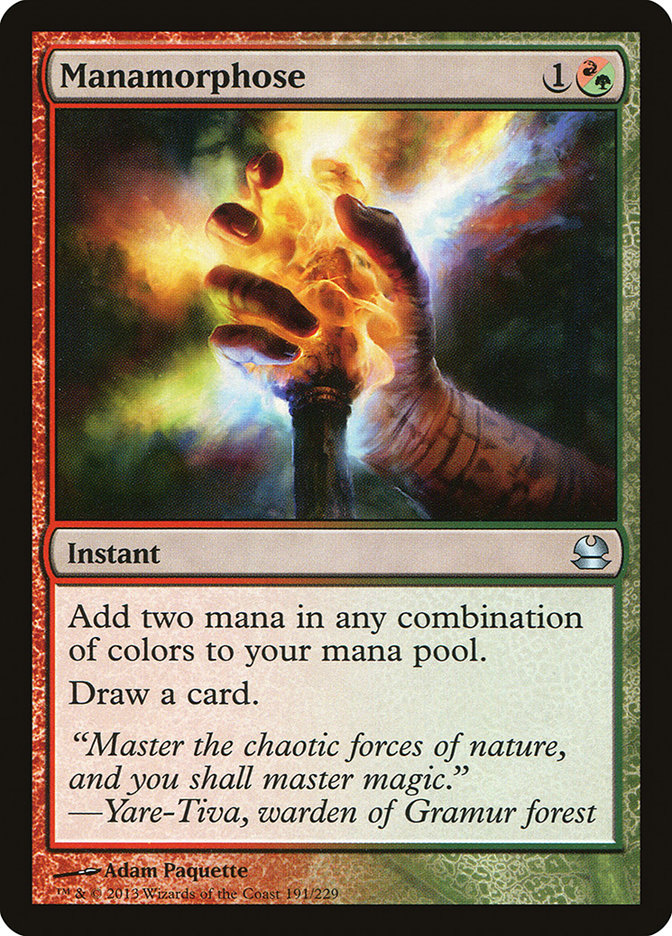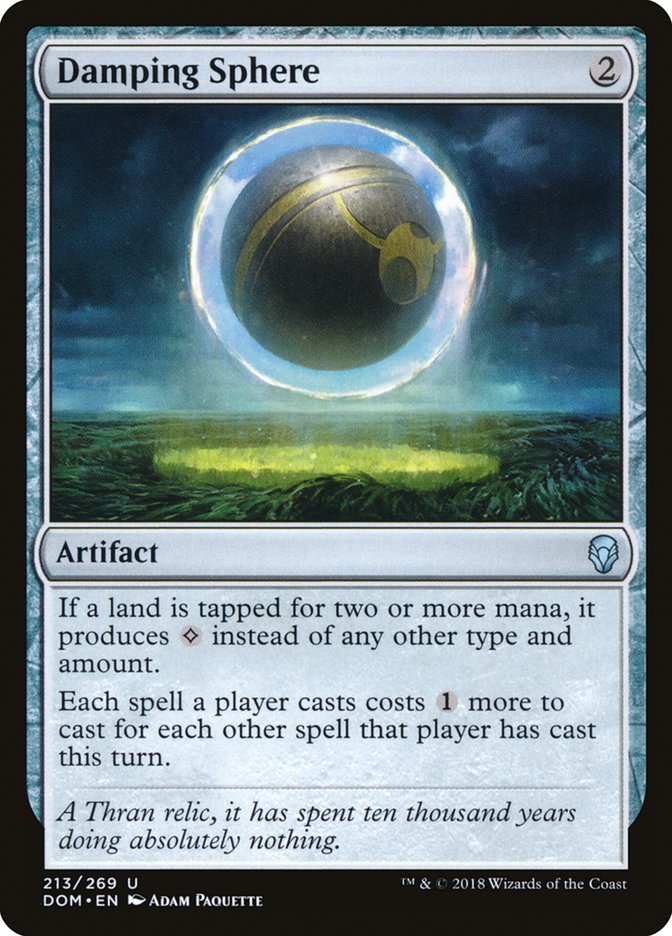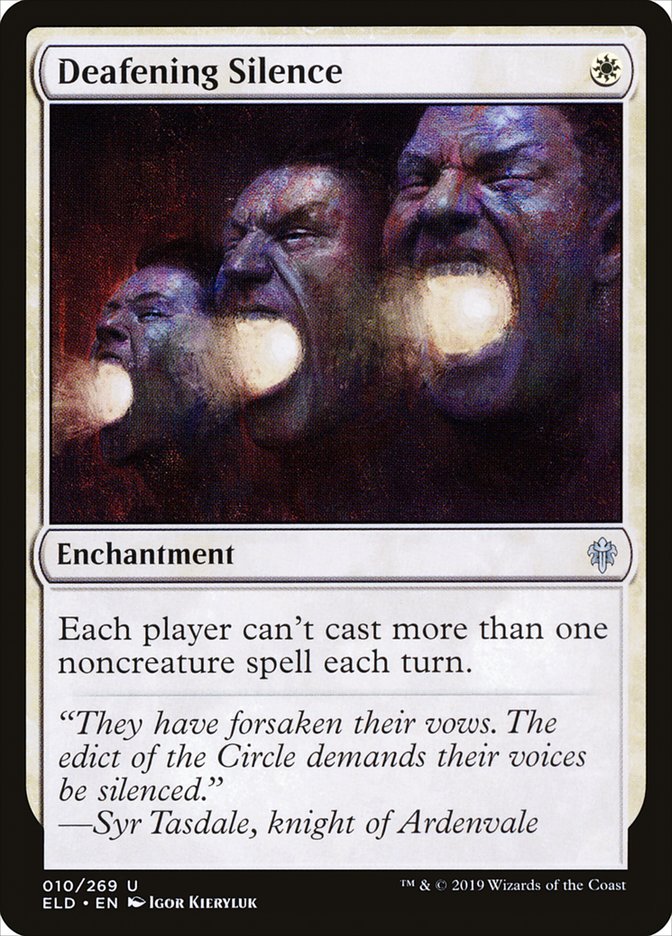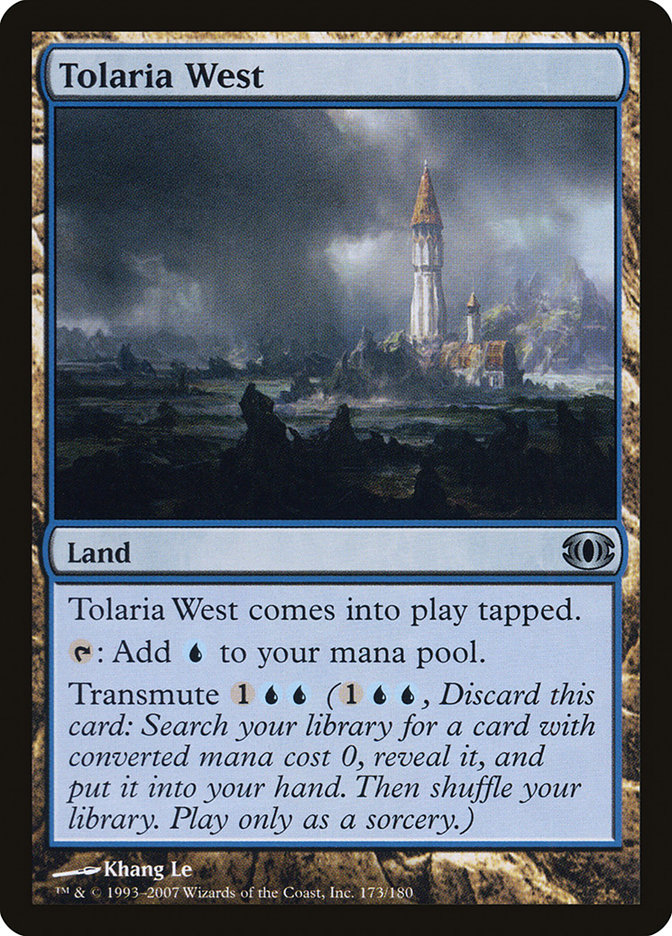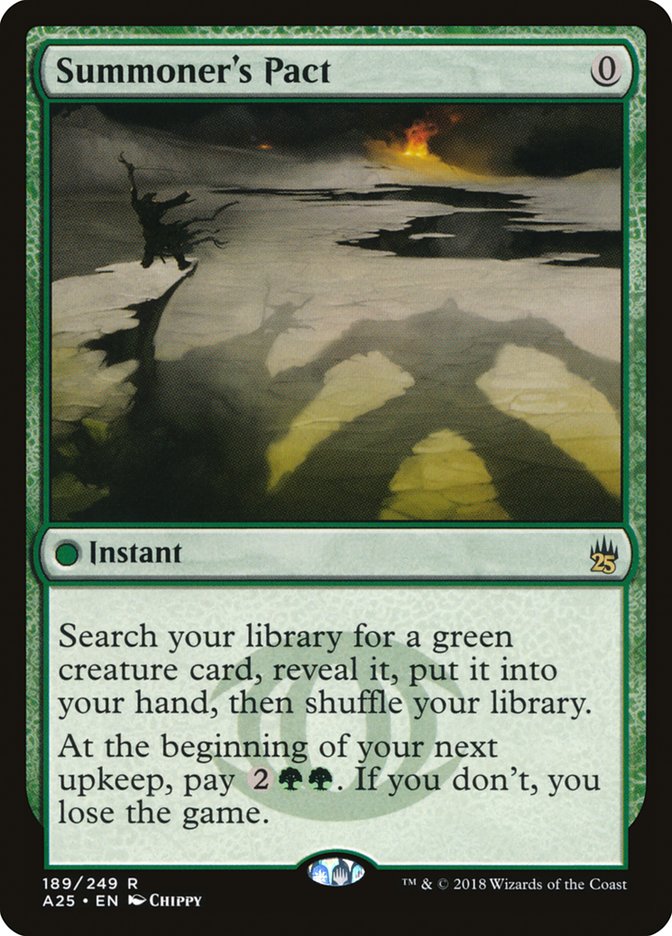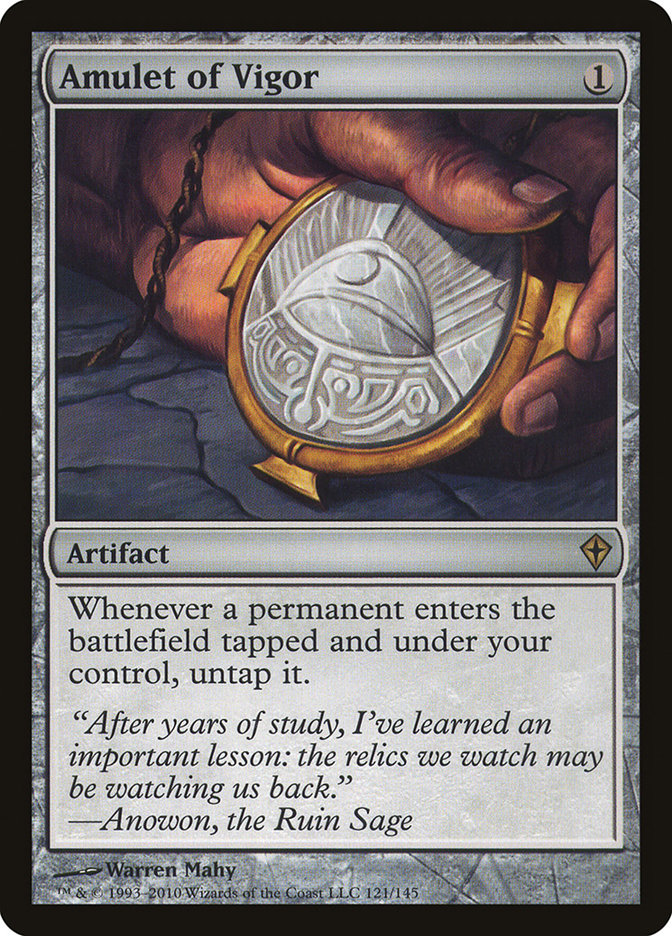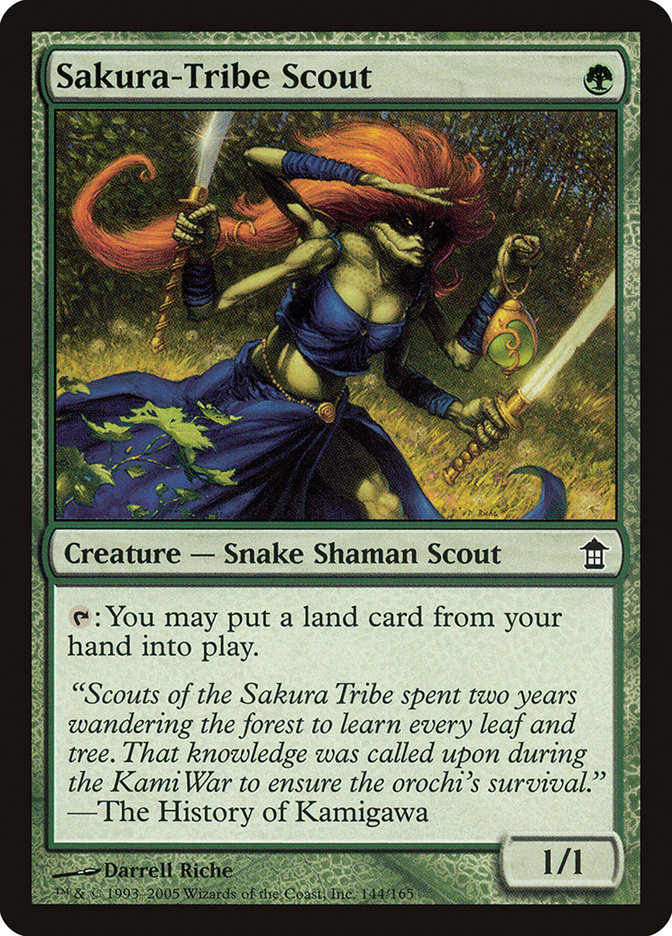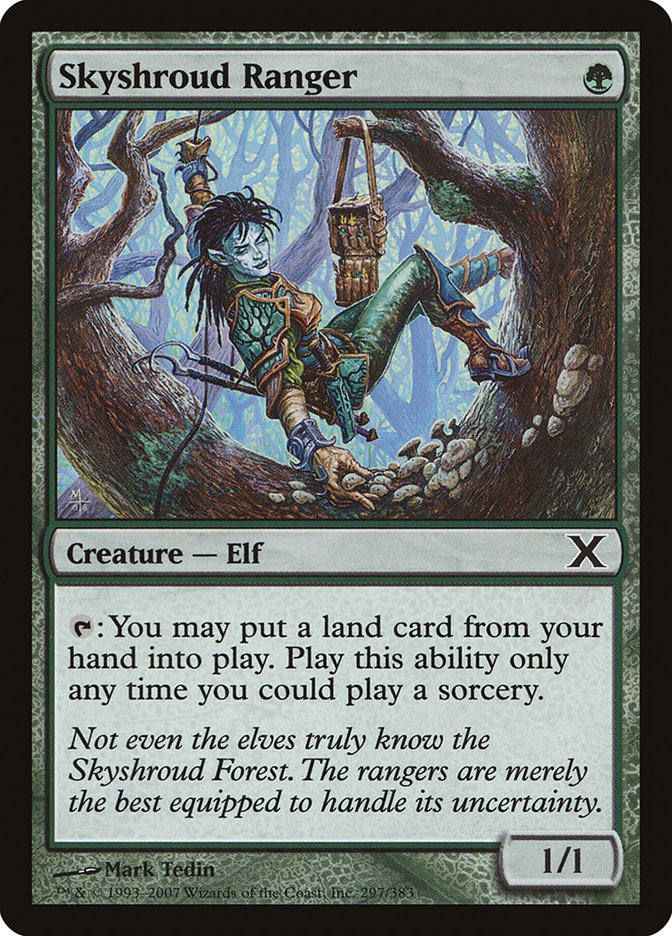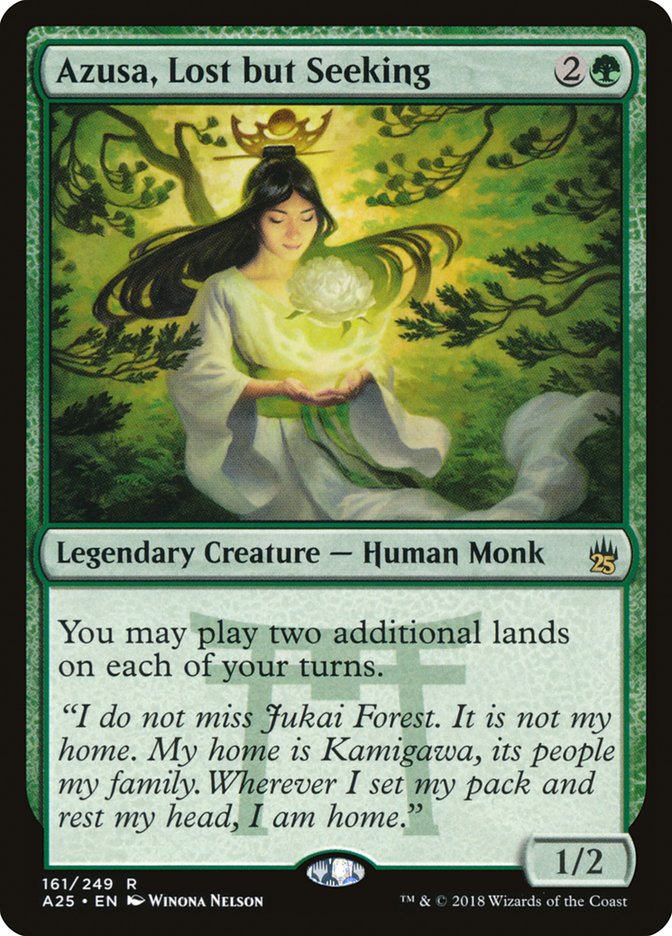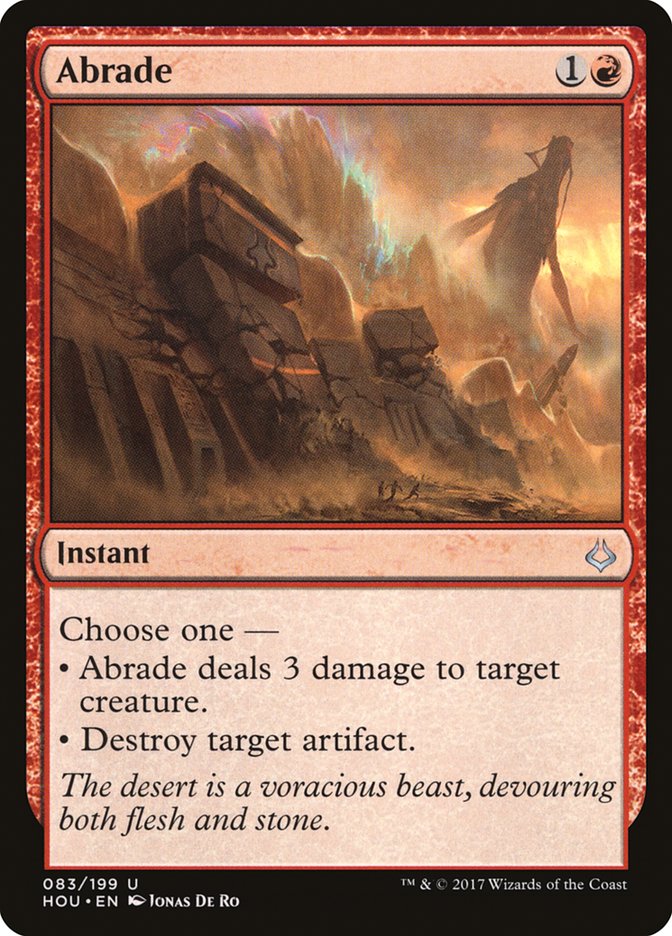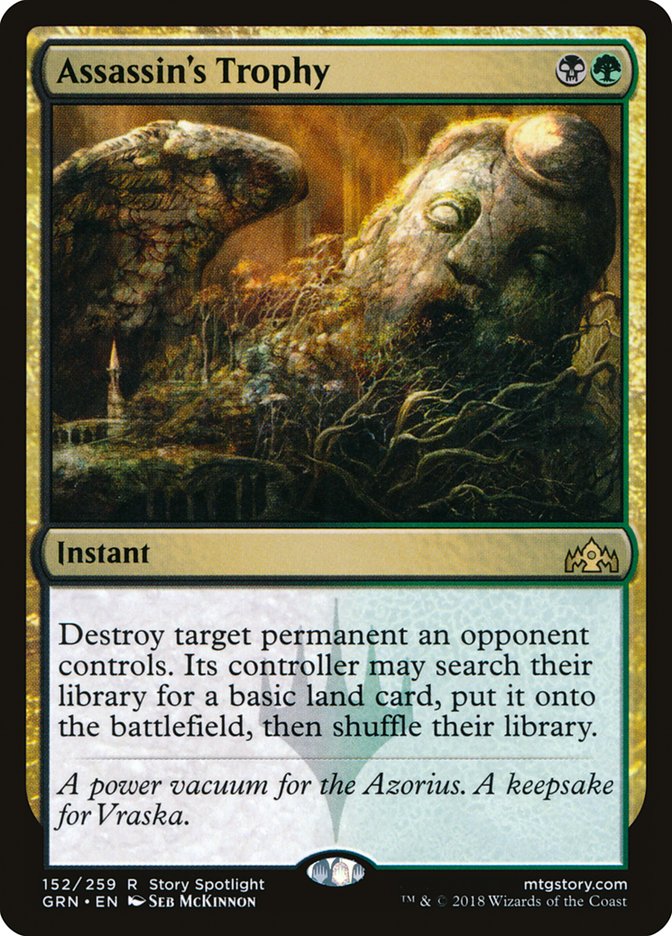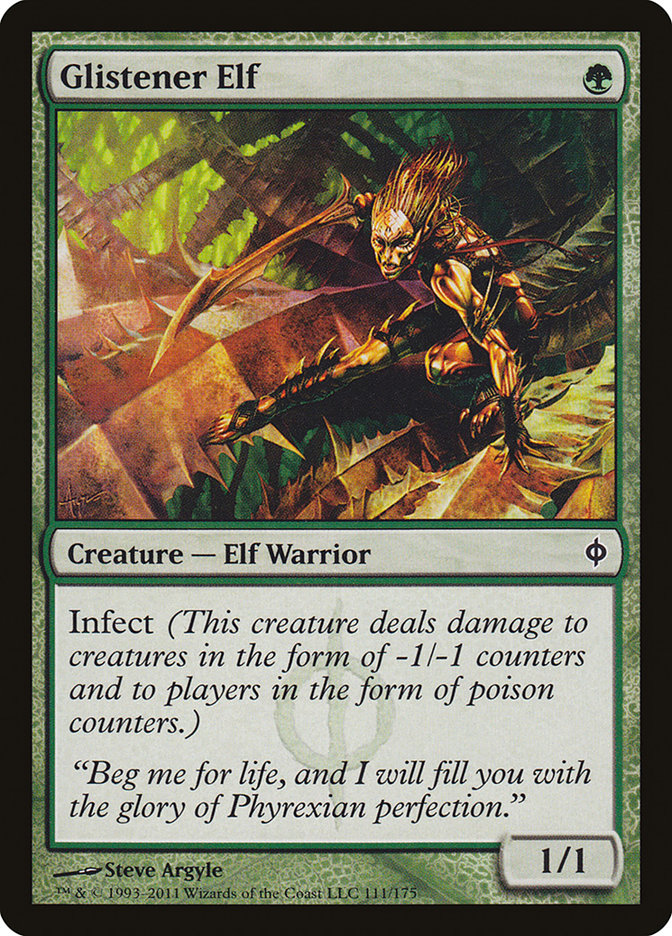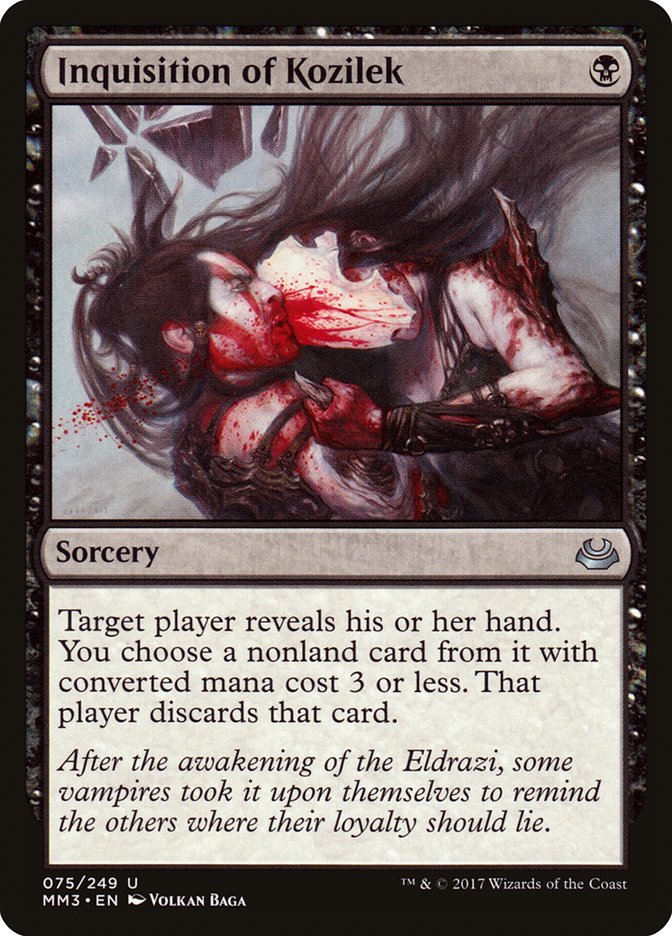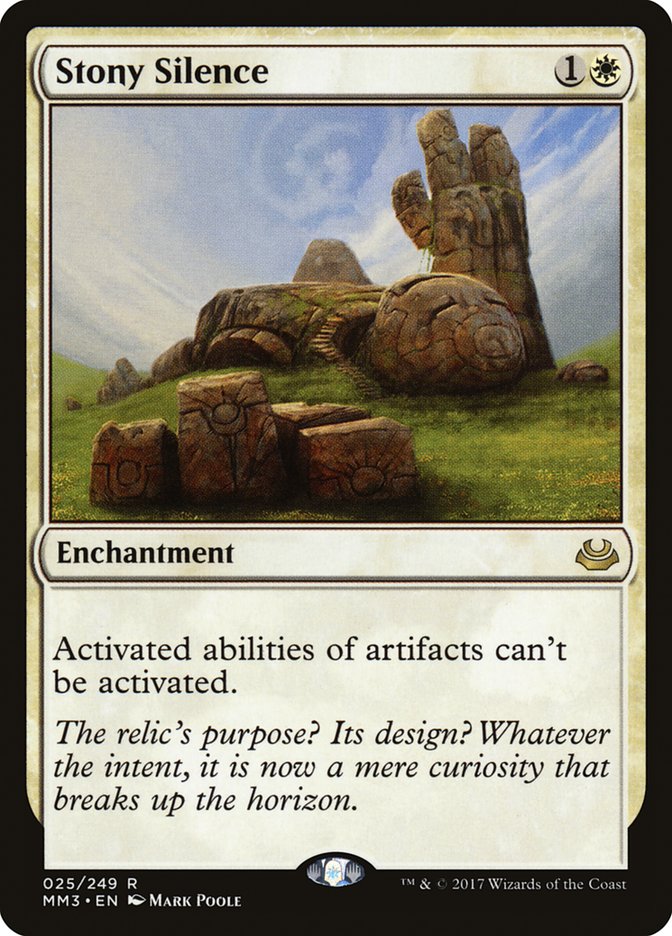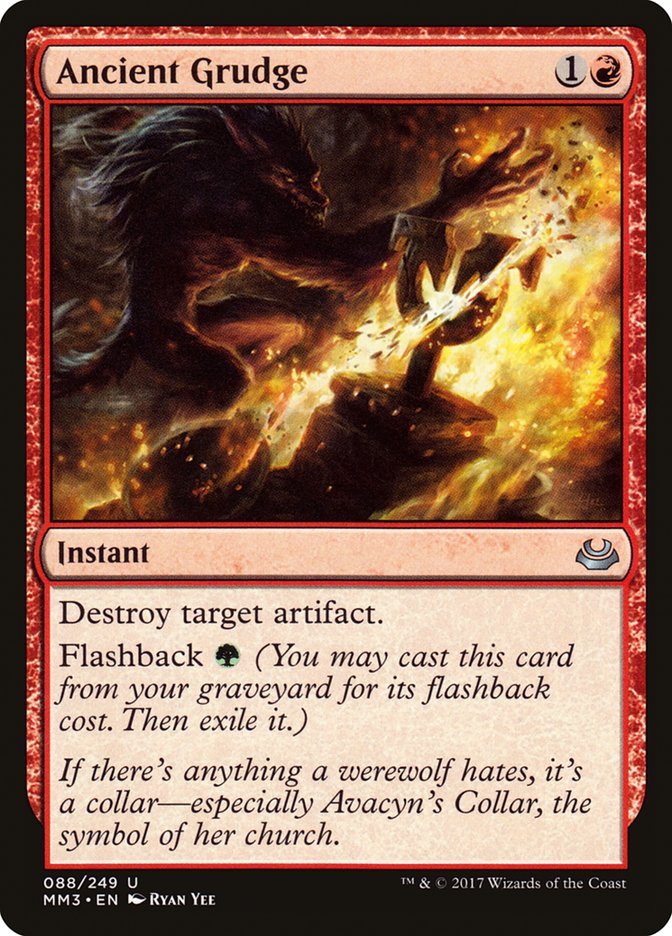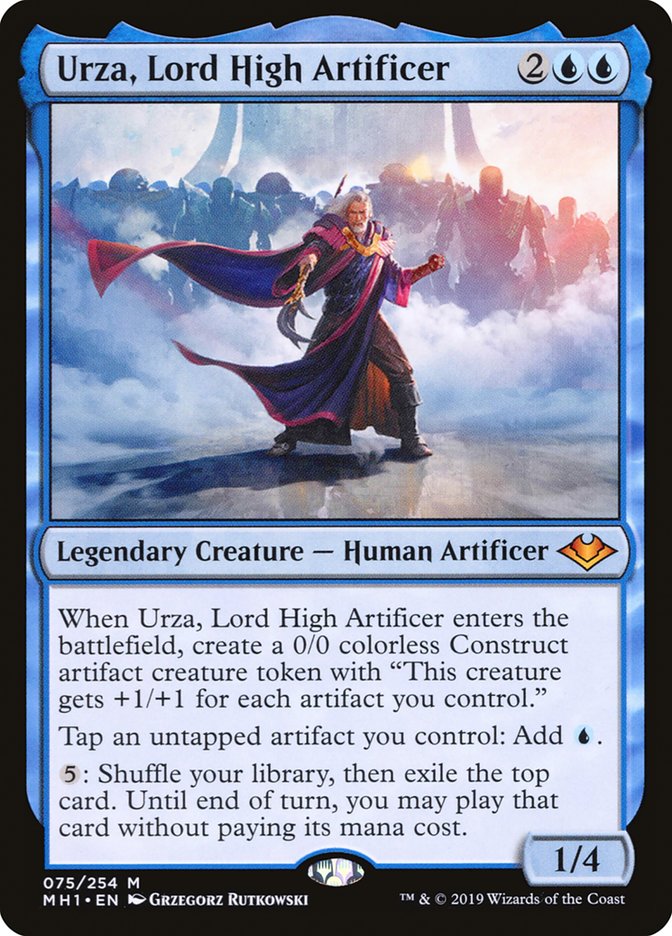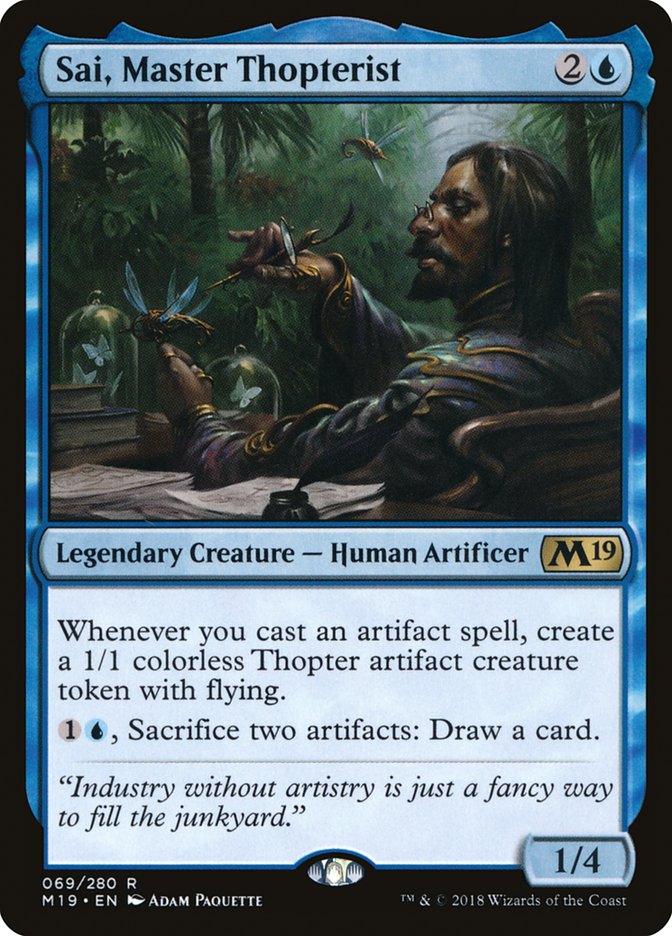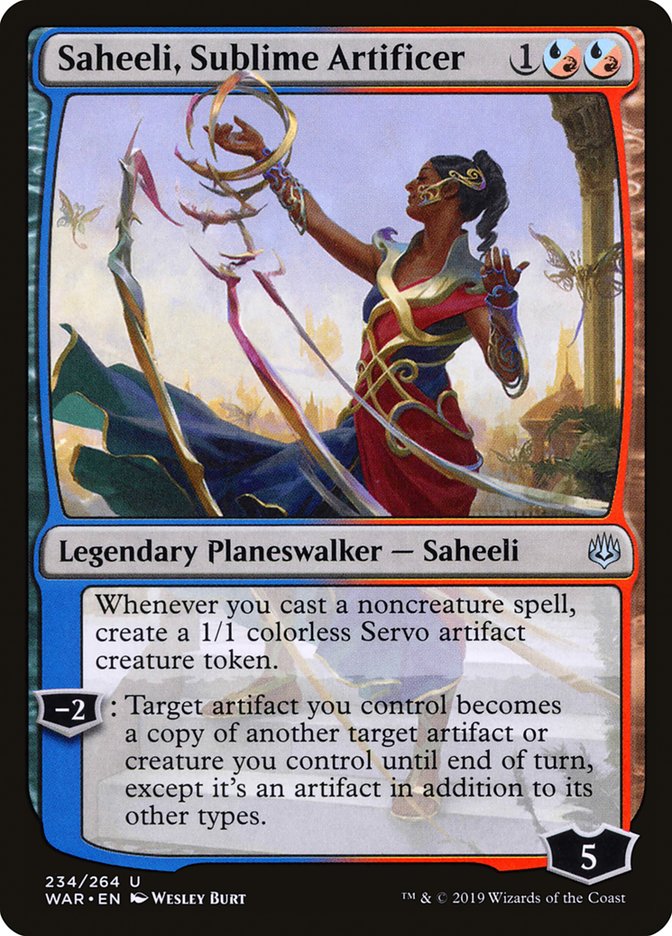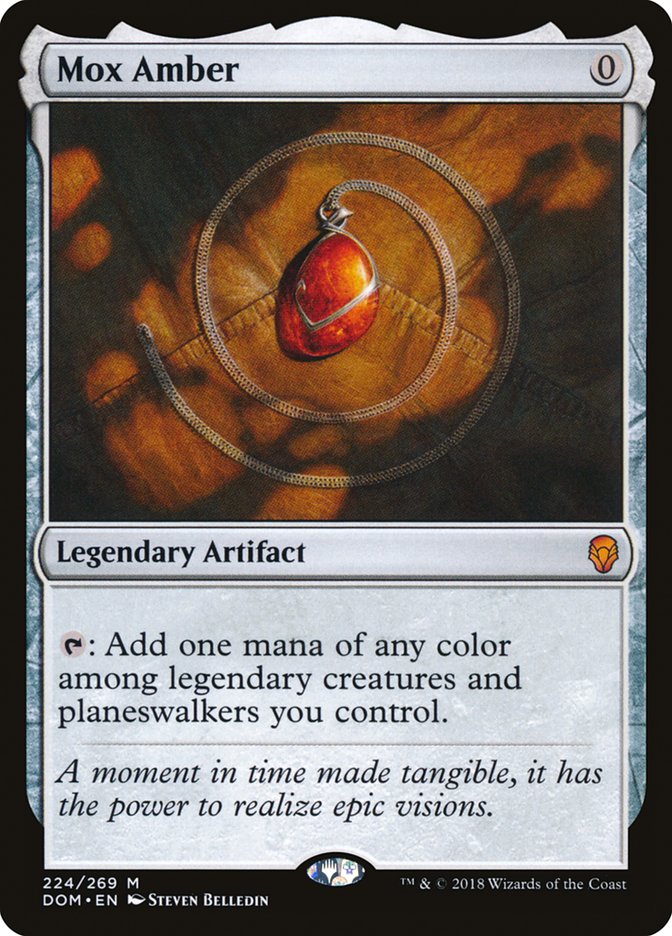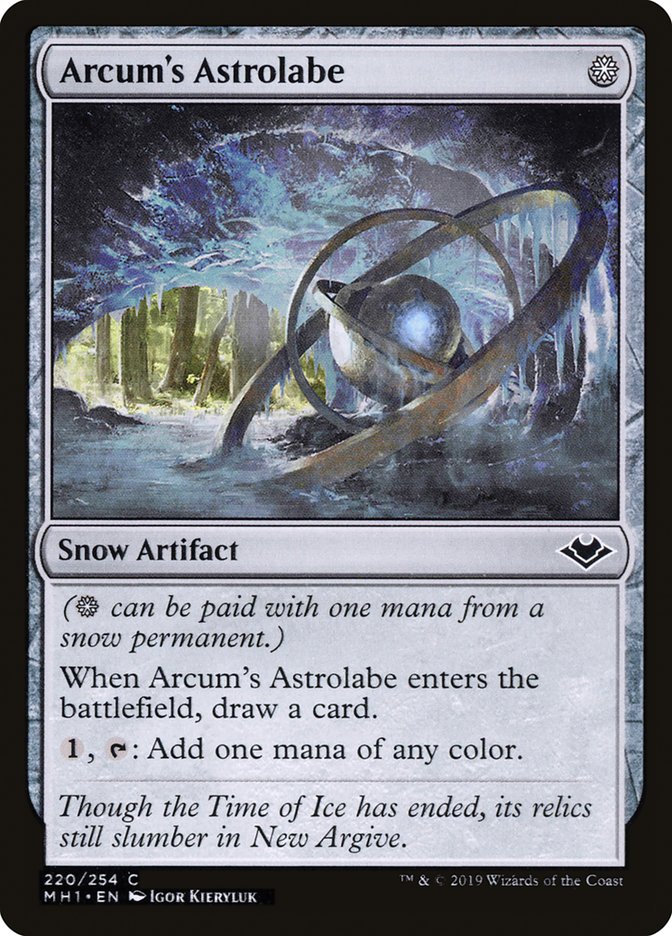Eleven major Modern tournaments in one weekend? That can only mean one thing: Regionals!
With so many Modern tournaments happening all over the country, it becomes a bit tougher to write articles about what to expect in a metagame. After all, each region is going to have its own ringers with their own deck preferences. The best way for succeeding at your upcoming Regional event is by honing one of the most important skills a Modern player can have: knowing how to fight anything.
In Modern, there are two ways of attacking archetypes: by attacking their cards or attacking their strategy. What’s going to determine the course of action is whether the deck is fair or unfair. Before getting into attacking, let’s break down what those actually mean on a fundamental level.
Unfair
Unfair decks are the ones that put almost all of their points into achieving a single thing and being really good at achieving that single thing. Decks that fall into this camp are Mono-Green Tron and Gifts Storm.
These kinds of decks are piles of enablers and payoff cards. The names of the pieces kind of give it away, but to spell it out a bit, take a look at this Mono-Green Tron list:
Creatures (7)
Planeswalkers (8)
Lands (17)
Spells (28)

In traditional Mono-Green Tron lists, the enablers are the cards that make it go.
The Urzatron itself and the cards that help assemble it are the match. The gas?
These are the payoff cards in the strategy. These are the reasons that the deck sinks so much of its real estate into trying to assemble the lands in the first place. A large chunk of decks in Modern are built similarly.
Gifts Storm?
Enablers…
….and payoffs.
You can apply this formula to most synergy decks in the format. The cards might not always do one of two things, but they’re going to be performing one of two roles: developing or winning the game.
Fair
Fair decks have a bunch of cards that tend to stand on their own and work towards an overarching goal. Unfair strategies are also working towards an overarching goal but are operating under the assumption that whatever they’re working towards is going to be powerful enough to brute-force their way to victory, and they don’t change their gameplan from matchup to matchups as frequently. Fair decks, on the other hand, are planning on trying to use their cards to navigate through situations in a way that lines up with the deck’s core strategy.
Take Burn, for example:
Creatures (12)
Lands (20)
Spells (28)
- 4 Lightning Bolt
- 4 Lava Spike
- 4 Lightning Helix
- 4 Rift Bolt
- 4 Searing Blaze
- 4 Boros Charm
- 4 Skewer the Critics
Sideboard

Despite being a linear deck, the way that Burns plays its cards can vary from matchup to matchup based on what the opponent is doing.
Another example that isn’t quite as linear would be Azorius Stoneblade:
Creatures (11)
Planeswalkers (5)
Lands (24)
Spells (20)

All the cards in this deck are reasonable cards in their own right, and the efficacy of some of them are going to vary wildly from matchup to matchup. These decks aren’t really defined by their cards as much as they are by their play patterns. This means that attacking these strategies isn’t going to work the same way as attacking the unfair decks.
Cards VS Strategies
I’ll get to attacking individual archetypes in a moment, but the trend that’s going to exist from deck to deck is going to come down to attacking cards versus attacking strategies.
Against unfair strategies, it’s usually going to be correct to attack the cards that the deck uses to operate. This is because the strategy itself is rooted in the synergies between its cards, and if it’s able to pull off whatever it’s working towards, it’s going to be difficult to actually fight through what the deck is doing while operating at full power.
When playing against fair strategies, the plan your deck has is frequently going to stay the same but will warp a bit in order to compensate for what the opponent is doing. This can take the form of subtle shifts, like fetching up shocklands less frequently against Burn, or larger changes, like waiting to pressure a Death Shadow opponent’s life total until they’re already below thirteen.
Taking that understanding into account, let’s jump into the decks themselves!
Creatures (8)
Lands (18)
Spells (34)
- 2 Sleight of Hand
- 4 Serum Visions
- 4 Gifts Ungiven
- 4 Desperate Ritual
- 3 Merchant Scroll
- 1 Echoing Truth
- 2 Opt
- 2 Remand
- 2 Grapeshot
- 4 Manamorphose
- 4 Pyretic Ritual
- 2 Past in Flames
Sideboard

With Gifts Storm being cheap as far as Modern decks go, well-positioned against the big-mana strategies of the format, and hot off an Open win, it’s likely to see some sort of boost in popularity going into the weekend. So what are the best ways to attack the cards in an unfair strategy like this one?
The cost reducers in the deck are the easiest things to interact with, as they’re permanents that usually have to remain on the battlefield for the duration of the combo in order for Gifts Storm to amass a large enough storm count in order to win. Cheap removal in the vein of Lightning Bolt and Fatal Push goes a long way here, with Lightning Bolt in particular being great due to its versatility as a way to help turn the corner.
Instant-speed removal is a necessity against the deck, as a competent Gifts Storm pilot can simply wait to deploy their cost reducer until the turn they plan to go off.
There are two ways to fight the Rituals in the deck: individually or en masse. Counterspells and hand disruption are the way to fight them individually and have the benefit of actually taking the spell away from the opponent, yet will be easier for Gifts Storm to simply try to play through.
Cards that deal with the combo pieces en masse come in the form of prison-esque hate rocks. The upside of these cards is that a Gifts Storm deck isn’t going to be able to simply cast enough spells to out-maneuver something like Chalice of the Void. The downside is that Gifts Storm players are still going to have the pieces in their hand if they ever find the interaction that deals with the Deafening Silence or Damping Sphere.
The final thing to attack from Gifts Storm is the fact that the traditional combo involves the card Past in Flames. That’s to say that it uses the graveyard, and more specifically, it casts a bunch of spells from it at sorcery speed. This is exploitable, but it isn’t the only way the deck can win, so don’t lean too hard on this point.
Gifts Storm in general is a deck that can eventually power through anything, either by way of Echoing Truth or having more threats than the opponent has mana’s worth of answers, so a clock is important. Keeping the game just out of reach, while drawing it to a favorable conclusion, is the tricky balance with the deck. For any decks that lean more reactive, this means finding a way to pressure the opponent early, even if it means sacrificing a bit of value.
Creatures (14)
Lands (28)
- 2 Forest
- 1 Snow-Covered Forest
- 2 Gemstone Mine
- 1 Boros Garrison
- 1 Golgari Rot Farm
- 1 Selesnya Sanctuary
- 1 Sunhome, Fortress of the Legion
- 1 Gruul Turf
- 2 Breeding Pool
- 1 Ghost Quarter
- 4 Simic Growth Chamber
- 1 Vesuva
- 3 Tolaria West
- 1 Bojuka Bog
- 1 Slayers' Stronghold
- 1 Cavern of Souls
- 1 Radiant Fountain
- 1 Field of the Dead
- 2 Castle Garenbrig
Spells (18)

Another unfair deck, Amulet Titan lives and dies by its ability to resolve and attack with Primeval Titan.
Because Primeval Titan grabs Tolaria West, which grabs Summoner’s Pact, which grabs Primeval Titan, using traditional removal on Primeval Titan isn’t a winning strategy. Countermagic is really the only way to try to answer the Titan itself, in order to cut off the chain of tutoring.
Another angle of attack is going after the deck’s development. Land destruction isn’t incredibly prevalent in Modern, but one of the ways to stop the deck skipping ahead to the casting-six-mana-spells phase of the game is by hurting its mana. This can be in the form of Fulminator Mage, Blood Moon, or Damping Sphere.
This isn’t going to trap them forever, as their deck is almost 50% lands and they can just make land drops the old-fashioned way to hit Primeval Titan mana, but these floodgates help prevent it happening too ahead of schedule.
Similar to the cost reducers in Gifts Storm, attacking the early accelerants with small-ball creature removal is a way to stunt the deck’s development.
One of the common traps that people will fall into when attacking Amulet Titan is bringing in a bunch of artifact hate in order to tackle its namesake card. The reality of the situation is that the card is frequently a piece of the puzzle that just puts the deck into overdrive, rather than something that’s needed for the deck to function.
A card like Abrade or Assassin’s Trophy is fine; it has uses outside of targeting Amulet of Vigor and can incidentally break up some of Amulet Titan’s most busted draws. Something like Ancient Grudge isn’t going to be great at breaking up the core of what Amulet Titan is doing.
One of the best ways to beat Amulet Titan – or any big mana deck for that matter – is to simply try to go under them during their developmental stages. This means actually committing 100% of resources to putting the opponent to zero life (or ten poison, in the case of Glistener Elf and friends) rather than trying to interact. This is operating under the assumption that the opponent won’t really do anything to prevent you from winning during the first two or three turns and capitalizing on this lack of interaction is worth more than sinking points into fighting the opponent’s strategy.
When going after any big mana strategy, it’ll frequently be better to attack the enablers and development rather than going after the payoff cards, as development is the name of the game for these decks. Keeping them in the early stages of the game is the most surefire way to make sure that the opponent flounders.
Creatures (13)
Planeswalkers (1)
Lands (18)
Spells (28)

Jund Death’s Shadow is one of the most popular fair decks in the format, and one of the decks that requires the most adjustment in one’s play patterns.
Because the deck has to sink resources into paying life down to an amount that allows Death’s Shadow to live, attacking early isn’t always going to be correct, despite traditional Magic heuristics teaching otherwise. Learning to play around Death’s Shadow in particular is a skill in its own right, but learning the balancing act around the card is worth significant percentage points in the matchup.
Redundancy is the name of the game against the decks playing a pile of hand disruption. Death’s Shadow isn’t the most powerful thing that can be done in Modern. Neither is Tarmogoyf. These strategies are banking on the fact that one or two pieces of disruption will knock the opponent on the back foot for long enough to kill the opponent while they’re trying to rebuild.
This creates an effect with sideboarding where less is more. If a card is incredibly effective in the matchup, it’s fine to bring in, but adding frills to the deck for the sake of covering bases isn’t the way to go. Trying to fight through hand disruption and Stubborn Denial will be better than covering every base imaginable.
Death’s Shadow decks will have a lower raw quantity of threats, which makes cards that interact with threats incredibly effective so long as they aren’t conditional in the way that Lightning Bolt and Dismember are. There are few things as embarrassing as dying with a Dismember in hand while staring down a 5/6 Tarmogoyf and a 7/7 Death’s Shadow.
All fair strategies have some base level of operations that they’re planning to interact upon. It’s a matter of figuring out the axis they’re the worst at fighting on and trying to squeeze that weakness, be it Death’s Shadow’s low threat count, Cryptic Command decks’ mana inefficiencies, or Burn’s inability to catch up in a losing race. Creating situations that fight the battles these decks aren’t adequately equipped to fight is how to beat them.
Creatures (9)
Planeswalkers (2)
Lands (18)
Spells (31)

There are so many shapes that Urza decks can take these days that it’s hard to keep track exactly of what’s going on, but to touch a bit on some of the things I talked about last week, Urza decks aren’t as cold to traditional artifact hate as they used to be.
Because Urza, Lord High Artificer; Sai, Master Thopterist; and Saheeli, Sublime Artificer all give value to artifacts, whether they can use their activated abilities or not, simply attacking the artifact half of these decks isn’t good enough. Stony Silence isn’t actually turning off the most important cards in these decks anymore.
In a similar fashion to the aforementioned unfair decks, the Urza decks operate on an enablers-payoffs paradigm. Unlike the previous decks, it’s better to attack the payoff cards in the artifact decks rather than the enablers. There are a couple of reasons for this:
First, the enablers don’t actually do anything. The Moxen produce mana, but they aren’t actually winning the game on their own, and without something like Urza or Paradoxical Outcome, the mana isn’t actually going anywhere. Second, Arcum’s Astrolabe and Mishra’s Bauble are replacing themselves almost immediately, starting on the very first turn.
These two points make attacking the enablers waver between “low-impact” and “absolutely pointless.”
On the other hand, having cards like Dismember and Assassin’s Trophy to tax the permanents that actually allow the artifact deck to win the game will make it so the opponent spins their wheels for no real reason.
The other way to attack these decks is by tackling their combo aspect. Cards that punish a ton of spells being cast in the same turn are great at forcing these decks to play fair. The important thing is making sure that the value the cards generate isn’t too much to handle. This more or less forces the surrounding cast of these cards to be proactive, lest they run the risk of Urza’s Construct token simply attacking for a bunch and embarrassing Damping Sphere’s controller.
Applications
Modern has a laundry list of different archetypes that people can play, but the fundamentals of attacking the above archetypes translate splendidly to attacking different decks in the format, even if the details shift from decklist to decklist. When building your deck for #SCGRegionals, consider what decks you want to be absolutely positive you can beat, and then take it a step further and ask yourself which of these will lead to you beating it:
- Attacking the enablers.
- Attacking the payoffs.
- Changing the battle my deck is fighting against my opponent.
- Completely subverting the axis my opponent is trying to operate on.
Every matchup in the format is going to fall into one of these categories. It’s all a matter of correctly identifying how to get your deck to jump through the proper hoops to make it happen.
Regardless of what you play, best of luck this weekend, and may the odds be ever in your favor!



